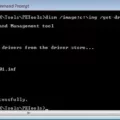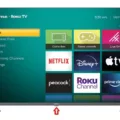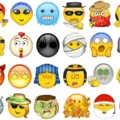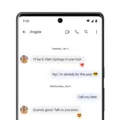Advanced messaging, also known as Rich Communication Services (RCS), is a modern way of communication that enhances the traditional Short Message Service (SMS) experience. Unlike SMS, which solely relies on the cellular network, advanced messaging utilizes data connectivity to deliver a more feature-rich and interactive messaging experience.
One of the main advantages of advanced messaging is the ability to send and receive messages that go beyond plain text. With RCS, users can send high-resolution photos and videos, share location information, and even send voice messages. This allows for a more dynamic and engaging conversation with friends, family, or colleagues.
Another notable feature of advanced messaging is the read receipts. When enabled, you can see whether your message has been delivered and read by the recipient. This can be particularly useful in situations where you need to know if your message has been received and acknowledged.
Additionally, advanced messaging supports group chats, allowing multiple participants to engage in a single conversation. Group chats can be more organized and efficient, as participants can see who is typing and read messages in real-time.
One key aspect to keep in mind is that advanced messaging requires data connectivity to function properly. Unlike SMS, which can be sent and received even without an internet connection, advanced messaging relies on a data connection to transmit messages. This means that in situations where data connectivity is limited or unavailable, SMS may still be used as a fallback option.
To manage advanced messaging settings, you can access the messaging app on your phone and navigate to the settings menu. From there, you will find an option to enable or disable advanced messaging. It is advisable to turn off advanced messaging before switching to a new phone to avoid any potential messaging issues.
Advanced messaging, or RCS, offers an enhanced messaging experience by allowing users to send multimedia content, enable read receipts, and participate in group chats. It requires data connectivity and can be managed through the messaging app settings. Whether you choose to use advanced messaging or stick with traditional SMS, it ultimately depends on your preferences and the availability of data connectivity.
How Do I Turn Off Advanced Messaging On My Android Phone?
To disable advanced messaging on your Android phone, follow these steps:
1. Open the messaging app on your Android phone.
2. Look for the menu icon, usually represented by three dots or lines, and tap on it.
3. From the menu options, select “Settings” or “Advanced Settings.”
4. In the settings menu, scroll down and locate the option for “Advanced Messaging” or “Enhanced Messaging.”
5. Tap on the toggle switch next to the advanced messaging option to turn it off. The switch should change from “On” to “Off” or vice versa.
6. A confirmation prompt may appear asking if you want to disable advanced messaging. Confirm your choice by selecting “OK” or “Disable.”
By following these steps, you will successfully disable advanced messaging on your Android phone. Please note that the exact steps may vary slightly depending on the make and model of your device and the messaging app you are using.
Benefits of disabling advanced messaging may include reduced data usage, improved compatibility with non-advanced messaging users, and the ability to use traditional SMS/MMS messaging features.
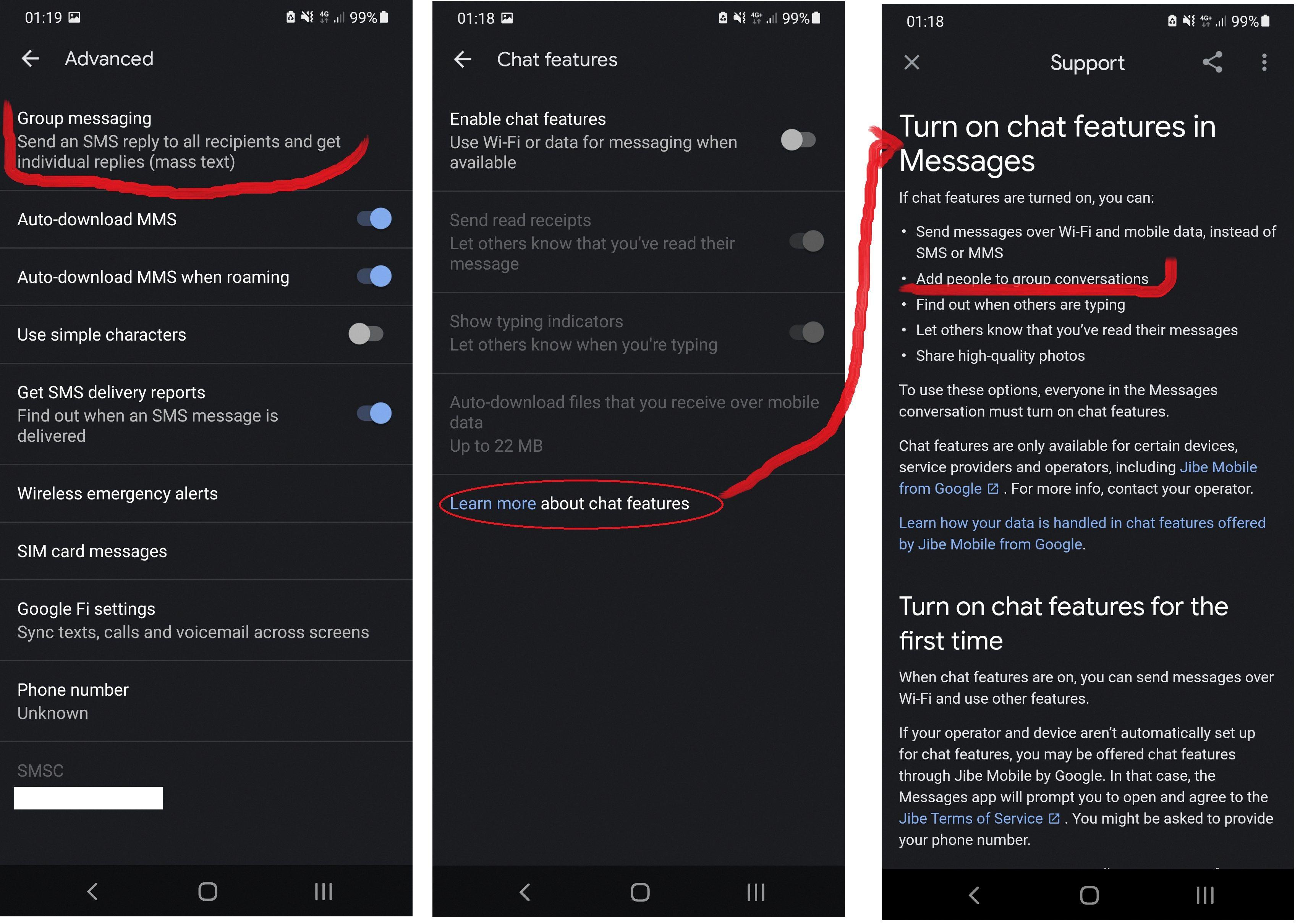
What Is Difference Between SMS And RCS?
The main difference between SMS and RCS lies in the way messages are transmitted. SMS, also known as Short Message Service, sends messages over the cellular network. It is a text messaging service that has been widely used for many years. On the other hand, RCS, or Rich Communication Services, requires data connectivity in order to transmit content.
Here are some key points to understand the difference between SMS and RCS:
1. Transmission: SMS messages are sent over the cellular network, while RCS messages require data connectivity before they can be transmitted. This means that RCS relies on an internet connection, either through mobile data or Wi-Fi, to send and receive messages.
2. Content: SMS is limited to simple text messages, typically with a maximum character limit of 160. It does not support multimedia content such as images, videos, or audio files. RCS, on the other hand, allows for richer content and supports multimedia attachments, emojis, stickers, and even location sharing.
3. Features: RCS offers enhanced features compared to SMS. It provides read receipts, typing indicators, and the ability to see when someone is responding. It also allows for group chats, high-resolution images, and larger file transfers. SMS lacks these advanced features and is primarily focused on basic text messaging.
4. Compatibility: SMS is supported by virtually all mobile devices and operating systems, making it universally accessible. RCS, however, requires both the sender and recipient to have devices and networks that support RCS. This can limit its availability and usage, as not all devices and carriers have adopted RCS technology.
SMS is a simple text messaging service that relies on the cellular network, while RCS offers more advanced features and multimedia capabilities but requires data connectivity. SMS is widely supported, whereas RCS may have limitations depending on device and network compatibility.
Should I Turn Off RCS?
It is advisable to turn off RCS (Rich Communication Services) before getting a new phone. There are several reasons why you should consider doing this:
1. Compatibility Issues: RCS is a relatively new messaging protocol, and not all devices and carriers support it. If you switch to a new phone or carrier that doesn’t support RCS, you may experience messaging issues. Turning off RCS ensures that you use the default SMS/MMS messaging system, which is universally supported.
2. Message Delivery: RCS relies on an internet connection to send messages, similar to messaging apps like WhatsApp or Facebook Messenger. If you switch to a phone that doesn’t have an active data connection or if you’re in an area with poor internet connectivity, RCS messages may not be delivered. Disabling RCS ensures that your messages are sent via traditional SMS/MMS, which can be more reliable in such situations.
3. Privacy and Security: RCS offers enhanced features like read receipts, typing indicators, and larger file transfers. While these features can be convenient, they also raise privacy and security concerns. Disabling RCS ensures that your messages are not subject to these potential vulnerabilities.
So, if you’re getting a new phone or switching carriers, it’s a good idea to turn off RCS. This will help avoid any potential messaging issues, ensure message delivery regardless of internet connectivity, and provide a more secure and private messaging experience.
How Do I Turn Off AT&T Advanced Messaging?
To turn off AT&T advanced messaging on your eligible smartphone, follow these steps:
1. Open the default messaging app on your AT&T smartphone.
2. Tap on the Menu option.
3. From the menu, select Settings.
4. Look for the Advanced Messaging option and tap on it.
5. You will see a toggle switch, tap on it to turn it Off.
Alternatively, if you are using the Messages by Google app, follow these steps to disable chat features:
1. Open the Messages by Google app on your smartphone.
2. Tap on the Menu option.
3. Choose Settings from the menu.
4. Look for the Chat features option and tap on it.
5. You will see a toggle switch, tap on it to turn it Off.
By following these steps, you will be able to turn off advanced messaging on your AT&T smartphone or disable chat features in the Messages by Google app.
Conclusion
Advanced messaging, also known as RCS (Rich Communication Services), is a more enhanced and feature-rich form of messaging compared to SMS (Short Message Service). It allows users to send and receive messages that include high-quality photos, videos, files, and other multimedia content. Advanced messaging requires data connectivity to transmit the content, whereas SMS operates over the cellular network.
By turning on advanced messaging in your phone’s messaging settings, you can benefit from features such as read receipts, typing indicators, group chats, and larger message size limits. However, it’s important to note that both the sender and receiver need to have advanced messaging enabled on their devices to fully utilize these features.
If you’re switching to a new phone, it is advisable to turn off advanced messaging on your previous device to avoid any potential messaging issues. You can easily do this by accessing the messaging settings menu and disabling advanced messaging. If you no longer have access to your old phone, you can fill out a form provided by Google to deregister your phone number.
Advanced messaging offers an improved messaging experience with additional features and capabilities compared to traditional SMS. It provides a more interactive and dynamic way of communicating, making it a convenient option for those who want to share rich media content and enjoy enhanced messaging features.

